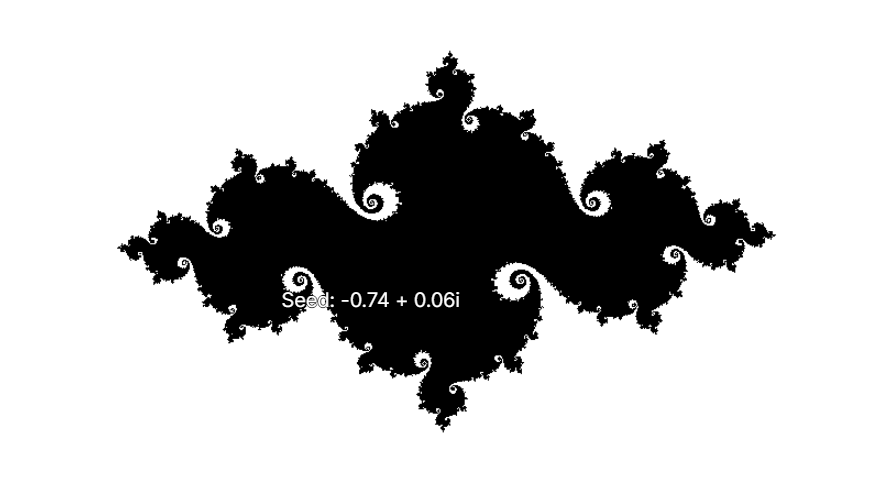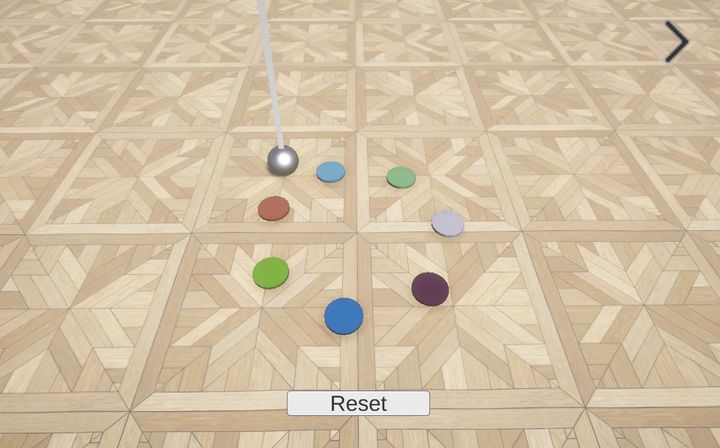Julia set explorer

A few weeks ago I wrote a bit about how Mandelbrot zooms are created, check that out here. Today's article is about that fractal's relatives, the Julia sets.
To refresh ourselves, the Mandelbrot set is generated by asking whether zero will explode or not when you apply a simple function to it again and again. In particular, you give me a complex number \(c\), and I tell you if \(z_{n+1} = z_n^2 + c\) will diverge if the first value is \(z_0 = 0\).
It turns out that once \(z_n\) is at least 2 away from the origin, there is no going back. It will diverge to infinity. Therefore, we only have to iterate on the computer until we reach this point. In the below visualisation we show all the points that have not crossed this barrier even after 1000 iterations of the algorithm:

What if instead of changing \(c\) in our formula, we kept \(c\) fixed and changed the value of \(z_0\)?
This is the tweak that gives the family of Julia sets*. In the below JavaScript you can move your cursor around to select a different value of \(c\) and see how it changes which starting points explode!
It turns out that for all values of \(c\) there will be some starting points that stay bounded, but for most \(c\) this is a fine dust of disconnected points and in this visualisation you will normally see nothing but a white screen as none of the bounded points have been hit upon.
There is a set of starting points for which this is not the case though and the Julia sets have an interior. If you click the checkbox then a red dot will appear at those values of \(c\) you find that give a Julia set with an interior. Why not try and see what the set that generates filled-in Julia sets looks like?
It turns out that the boundary is **SPOILER** the Mandelbrot set.
If anyone could give an intuitive explanation** of why this is the case, I would be thrilled.
In the meantime, this video by 3b1b on these fractals is incredible. Let's hope for a follow-up that covers the connectedness of filled-in Julia sets!
*Technically, Julia set refers to the boundary of the shapes we are creating, where the iterative map behaves in a chaotic way. The interior and white exterior are called the Fatou set. Here the map behaves in a more predictable way, in a cycle or tending towards some point or infinity.
**If you are particularly motivated and have done a course in complex analysis, you could read this book to grab the proof and necessary background. The proof starts on page 93 but uses material from throughout the preceding chapters. I don't feel like embarking on a marathon like that for now though, so I think I'll sit this one out.


Comments ()